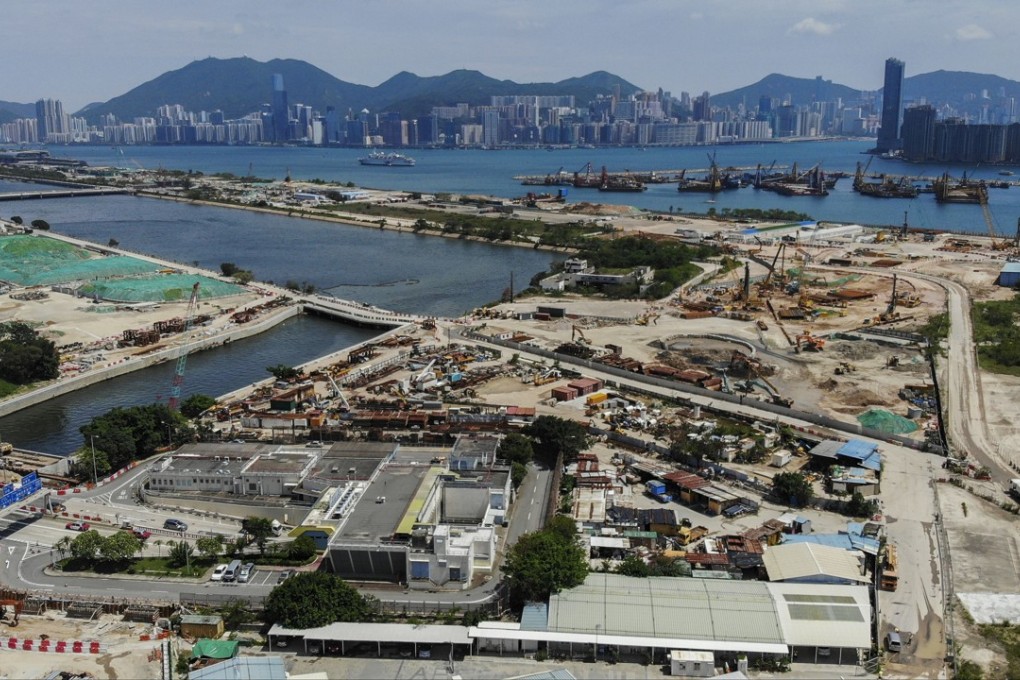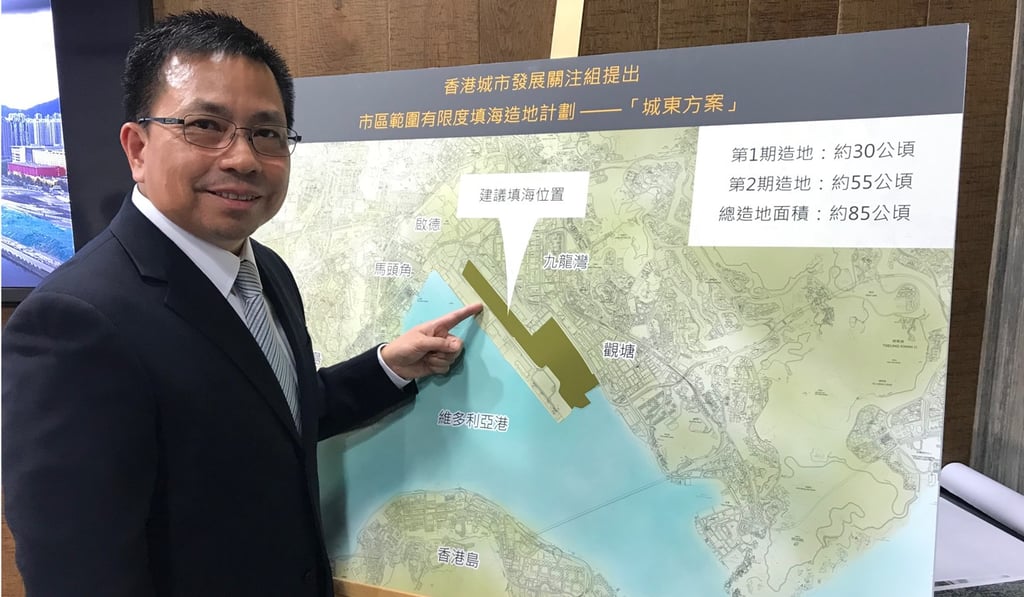Reclaim 2.6km-long strip in Victoria Harbour to ease Hong Kong’s housing woes, architect group proposes
But critics say plan has low chance of success given existing law against development in the area

Apart from building a mega artificial island offshore, why not think about reclamation in the heart of Hong Kong?
That was the question raised by a group of surveying and architectural sector professionals on Wednesday, as they suggested developing a 2.6km-long strip of harbour next to the city’s iconic former airport runway in Kai Tak.
The Hong Kong City Development Concern Group said that “Project City-E” would provide an additional 85 hectares of land – enough to build 70,000 flats by 2027 – and would help ease Hong Kong’s housing shortage in a relatively short time frame compared to other reclamation projects.
Critics however said that the proposal was not realistic as such large-scale work would violate the Protection of the Harbour Ordinance, which prohibits any reclamation in Victoria Harbour.

Vincent Ho Kui-yip, the group’s convenor, said the strip was conveniently located in an urban area that already had a well-established transport network, including the future Sha Tin-Central rail link and the Tseung Kwan O-Lam Tin Tunnel that would go through the area.